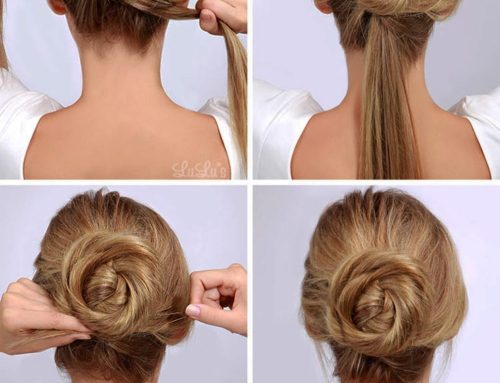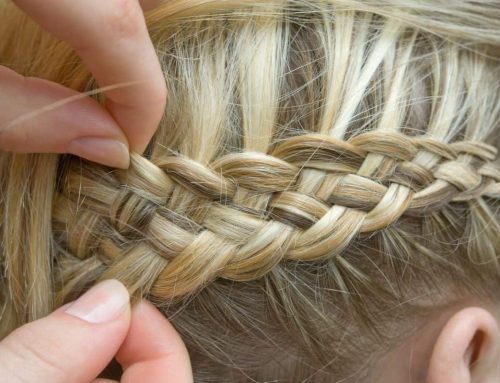I. Introduction
Wigs are fabulous for changing up your style or enhancing your look, but anyone who’s worn one knows the dreaded enemy: tangles! Whether you’re rocking synthetic locks for a bold cosplay or sporting a human hair piece for everyday glam, tangles can turn your fabulous hairpiece into a frustrating mess. Let’s dive into this hairy issue with some pro tips from Jasmin Todd, a renowned Curly Hair Specialist. Jasmin emphasizes the importance of proper wig care, stating, “Just like natural hair, wigs need love and attention to stay looking their best.
II. Synthetic vs. Human Hair Wigs
When it comes to wigs, not all hair is created equal. Synthetic wigs are made from man-made fibers designed to mimic real hair, offering a budget-friendly option for those looking to switch up their style without breaking the bank. They’re great for occasional use but tend to tangle more easily due to the nature of the fibers. The static electricity in synthetic fibers can cause knots and tangles, especially in longer wig styles.
On the flip side, human hair wigs are the crème de la crème of hairpieces, made from real human hair. They offer a natural look and feel, with the added bonus of versatility in styling. Human hair wigs can handle heat styling and tend to tangle less compared to their synthetic counterparts. However, they’re not without their challenges. Just like natural hair, they require regular washing, conditioning, and careful brushing to prevent tangles and maintain their luster.
Jasmin Todd advises, “Whether synthetic or human, wigs need regular care to prevent tangling. For synthetic wigs, use products designed for synthetic hair to reduce static and smooth the fibers. For human hair wigs, treat them as you would your natural hair, with gentle detangling and moisturizing products.
By understanding the differences in wig types and their care needs, you can keep your wig looking flawless and tangle-free. Whether you’re a synthetic wig enthusiast or a human hair wig aficionado, the key to battling tangles lies in regular maintenance and using the right products for your wig type.
III. Preventing Tangles
Tangle-free wigs are the dream of every wig wearer, but achieving this takes a bit more than just wishing. To keep your wig smooth and manageable, you need a game plan that combats knots before they start. Here’s the lowdown on keeping those strands straight and tangle-free.
First up, let’s talk prevention. The key to a tangle-free wig is regular maintenance. This means brushing your wig gently with a wide-tooth comb or a wig brush, starting from the ends and working your way up to prevent pulling and stress on the fibers. Jasmin Todd, our curly hair guru, suggests, “Always brush your wig when it’s dry. Wet fibers are more prone to stretching and breaking, leading to those pesky tangles.”
Storage is also a biggie in the tangle prevention game. Don’t just throw your wig on the chair after a long day. Instead, invest in a proper wig stand or mannequin head to keep it in shape and tangle-free. If you’re on the go, silk or satin bags are perfect for keeping your wig safe and smooth.
Now, let’s talk routine maintenance. Regular washing with the right products is essential. Use shampoos and conditioners specifically designed for wig care, as these are gentler and help maintain the wig’s natural moisture balance. Jasmin advises, “For synthetic wigs, use a conditioning spray to keep the fibers soft and manageable. For human hair wigs, a light, leave-in conditioner will do wonders.”
A common mistake wig wearers make is over-washing their wigs, which can lead to dryness and increased tangling. Depending on how often you wear it, washing your wig every 2-4 weeks is usually enough. And here’s a pro tip from Jasmin: “After washing, apply a silicone-based serum to the ends of your wig to act as a barrier against tangles and frizz.”
In summary, preventing tangles in your wig is all about regular care, proper storage, and using the right products. By incorporating these practices into your wig maintenance routine, you can keep your hairpiece looking fresh, flowing, and free of frustrating tangles.
IV. Detangling Synthetic Wigs
Detangling a synthetic wig can seem like a daunting task, but with the right approach, it can be a breeze. Let’s dive into the nitty-gritty of how to tackle those stubborn knots without damaging your precious wig.
A. Setup and Initial Steps
First things first, you need to set up your workspace. Placing the wig on a stand is not just about convenience; it’s about creating the perfect angle and height for you to work through the tangles without straining your arms or back. A sturdy wig stand or even a tall bottle can serve as a makeshift stand if you’re in a pinch. As Jasmin Todd advises, “Always work at a comfortable height to avoid unnecessary pull on the wig fibers, which can lead to breakage.”
Once your wig is securely on the stand, the real work begins. Start by gently dividing the wig hair into manageable sections using clips or bands. This not only makes the task less overwhelming but also prevents re-tangling the parts you’ve already worked on. It’s like solving a puzzle, piece by piece.
B. Detangling Process
Now, onto the actual detangling. Before you dive in with a comb, spritz a generous amount of wig detangler on each section. If you don’t have a commercial wig detangler, don’t fret! A DIY mix of water and wig-safe conditioner (in a 3:1 ratio) works wonders. Jasmin Todd recommends, “If you’re using a homemade solution, ensure it’s light to avoid build-up, which can attract more dirt and lead to more tangles.”
With your wig moistened by the detangler, begin finger combing to loosen the larger knots. This method is gentle and allows you to feel the knots, reducing the risk of yanking too hard and causing damage. After finger detangling, use a wide-tooth comb to work through the smaller knots, starting from the ends of the hair and gradually moving upwards towards the base of the wig.
Remember, synthetic fibers are more delicate than human hair, so patience is key. Rushing through this process can cause the fibers to stretch, weaken, and eventually break. Jasmin Todd emphasizes, “Take your time and treat the wig as you would your own hair, with care and gentleness.”
In conclusion, detangling a synthetic wig is all about the right setup, using suitable products, and employing gentle techniques. With these steps, you can extend the life of your wig and keep it looking as fabulous as the day you bought it.
V. Detangling Human Hair Wigs
When it comes to human hair wigs, the approach to detangling can be similar to how you handle your natural hair, yet it requires some extra gentleness and care. Let’s explore the best practices to get those knots out without causing damage.
A. Preparation and Sectioning
The first step in the detangling process is to secure the wig on a styling head. If you don’t have a styling head, any stable stand or even a high-backed chair can be a good substitute. The goal is to have the wig at a comfortable working height and angle. Once the wig is in place, begin sectioning the hair. Jasmin Todd suggests, “Think of the wig as a map. Section it into territories that you can conquer one by one, this will make the task less daunting.”
Using clips to section the hair not only makes the detangling process more manageable but also helps prevent re-tangling the areas you’ve already worked on. Start with broad sections and then narrow down to smaller ones as you tackle each knot.
B. Detangling Techniques
For detangling, start with your fingers to gently tease apart the larger knots. This method protects the wig from the harsh pulling that can occur with combs or brushes. Once the bigger tangles are loosened, switch to a wide-tooth comb or a specialized wig brush. Begin at the ends of the hair, slowly working your way up to the roots, taking care not to pull too hard.
Moisturizing is key in this process. Applying a light conditioner or a detangling spray can make a significant difference. These products add slip to the hair strands, reducing friction and making it easier to comb through the tangles. As Jasmin Todd shares, “Always opt for products specifically designed for wigs or gentle, natural hair products. The right product can transform a frustrating detangling session into a smooth and satisfying experience.”
Remember, patience is vital when detangling a human hair wig. Rushing can lead to breakage and even ruin the wig. Set aside enough time to gently work through the knots, and you’ll be rewarded with a wig that looks as good as new.
In conclusion, detangling a human hair wig combines the right preparation, gentle techniques, and the correct products. By following these steps, you’ll protect your investment and keep your wig looking beautiful and tangle-free.
VI. Cleaning and Maintenance
Properly cleaning and maintaining your wig not only keeps it looking fresh and natural but also extends its lifespan, whether it’s synthetic or human hair. Let’s dive into how you can care for your wig post-detangling to ensure it remains in top condition.
For Synthetic Wigs:
- Washing: Use a gentle, wig-specific shampoo. Fill a basin with cool water, add a small amount of shampoo, and immerse your wig, gently swishing it around. Avoid rubbing or twisting, which can cause tangles and damage the fibers.
- Conditioning: After rinsing the shampoo thoroughly, apply a synthetic wig conditioner. These conditioners are designed to keep the fibers soft and manageable without weighing them down.
- Drying: Pat the wig gently with a towel to remove excess water. Avoid wringing it out. Place it on a wig stand to air dry naturally. Never use high heat from a blow dryer, as it can melt or distort synthetic fibers.
For Human Hair Wigs:
- Washing: You can use high-quality, sulfate-free shampoo and conditioner. Wash the wig in lukewarm water by gently massaging the shampoo and conditioner from the roots to the ends.
- Conditioning: Use a hydrating conditioner to help maintain the natural sheen and texture of the human hair. Leave it in for a few minutes before rinsing.
- Drying: After washing, gently blot the hair with a towel and lay it flat on a drying rack. Human hair wigs can be blow-dried on a low setting or left to air dry.
VII. Advanced Care Tips
Storing your wig correctly can prevent tangling and damage. Here are some tips for long-term storage:
- Avoid Humidity: Store your wig in a cool, dry place away from direct sunlight and humidity, which can affect the shape and texture of the hair.
- Use a Wig Stand or Mannequin: This helps maintain the wig’s shape and style. For long-term storage, consider a silk or satin bag to prevent dust build-up and static.
When selecting products for wig maintenance, choose those specifically designed for wig care. These products are formulated to maintain the wig’s quality without causing buildup or damage.
VIII. Additional Wig Tutorials
For those looking to expand their wig repertoire, consider exploring tutorials on creating and maintaining various wig styles. From elegant updos to casual daily looks, understanding how to style your wig can enhance its versatility.
Specialty Wigs:
- Cosplay and Theatrical Wigs: These often require more intensive styling and care due to their complex designs and the need for them to withstand long wear times. Using the right styling tools and products can make a significant difference in maintaining their appearance and longevity.
In summary, proper cleaning, maintenance, and storage are crucial for keeping your wigs in pristine condition. By following these guidelines and exploring additional tutorials, you can ensure your wigs look fabulous and last longer, allowing for endless styling possibilities and enjoyment.
IX. Community Q&A
Navigating the world of wig wearing can be tricky, especially when facing tangles and maintenance challenges. Many wig wearers share their dilemmas, seeking solutions that can save their cherished pieces from becoming unusable.
For instance, a frequent query is how to revive a synthetic wig that’s turned into a knotty mess. The key here is patience and the right technique. Starting with a gentle brushing from the ends and working upwards can gradually untangle the mess without causing damage. Some even suggest using a fabric softener mix as a detangling agent, providing the synthetic fibers with a smoother surface to ease out knots.
Another common question is about dealing with wigs that have lost their luster and become frizzy. Experts often recommend using specific wig-friendly products designed to restore shine and manageability. Additionally, they suggest avoiding excessive heat and harsh treatments that can strip wigs of their protective coatings.
X. Professional Insights
Jasmin Todd, with her extensive experience in curly hair care, emphasizes the importance of understanding the material of your wig to provide the best care. She notes that synthetic and human hair wigs require different approaches. Synthetic wigs, for example, should not be exposed to high heat, while human hair wigs may benefit from deep conditioning treatments to retain moisture and elasticity.
Todd also stresses the significance of regular maintenance to prevent tangling and damage. She advises against neglecting routine care, as this can lead to irreversible damage, making the wig difficult to manage and style.
XI. Conclusion
Maintaining a wig, be it synthetic or human hair, necessitates a tailored approach to ensure its longevity and vitality. Regular detangling, appropriate washing, and proper storage are crucial to keeping your wig looking fresh and natural. Incorporating expert advice and community experiences into your wig care routine can make a significant difference in managing and preserving your wig’s quality. Ultimately, understanding and responding to the specific needs of your wig will enable you to enjoy its beauty and functionality for years to come.
Expanded Topics:
Storage and Handling
Storing your wig correctly is crucial for maintaining its quality and appearance. Wigs should be kept on a wig stand or mannequin head to preserve their shape and prevent the fibers from getting tangled or crushed. If you’re short on space, storing them in a silk or satin bag can also prevent tangles and protect the wig from dust. Remember, the way you handle your wig can significantly affect its lifespan. Always use gentle movements, and avoid stretching or pulling the fibers to minimize damage and tangling.
Special Considerations for Different Wig Types
Different types of wigs require specific care techniques. Lace front and full lace wigs, known for their natural appearance, need delicate handling, especially around the lace areas to prevent tearing. Monofilament wigs, which offer versatile styling, also demand careful attention to avoid tangling at the base. For wigs with stubborn tangles, using a detangling spray and a wide-tooth comb can be effective. Starting from the ends and gently working your way up can gradually loosen the knots without causing damage.
Repair and Restoration
There comes a point when professional help may be the best option for severely tangled or damaged wigs. Experts can offer services like deep conditioning treatments, detangling, and even hair addition to restore a wig’s appearance. For those who prefer DIY methods, gentle washing, deep conditioning, and careful combing can rejuvenate an old wig. Sometimes, trimming the ends can also help remove split ends and give the wig a fresher look.
Future of Wig Maintenance
The future of wig maintenance looks promising with the advent of new technologies and products designed to extend the life of wigs. Innovations in synthetic fibers are making wigs more resilient to tangling and easier to care for. Additionally, the development of specialized wig care products, like no-rinse conditioners and detangling sprays, offers wig wearers more options for maintaining their investments. As materials and construction methods advance, wigs are likely to become more durable and easier to manage, allowing for longer periods between maintenance sessions.




